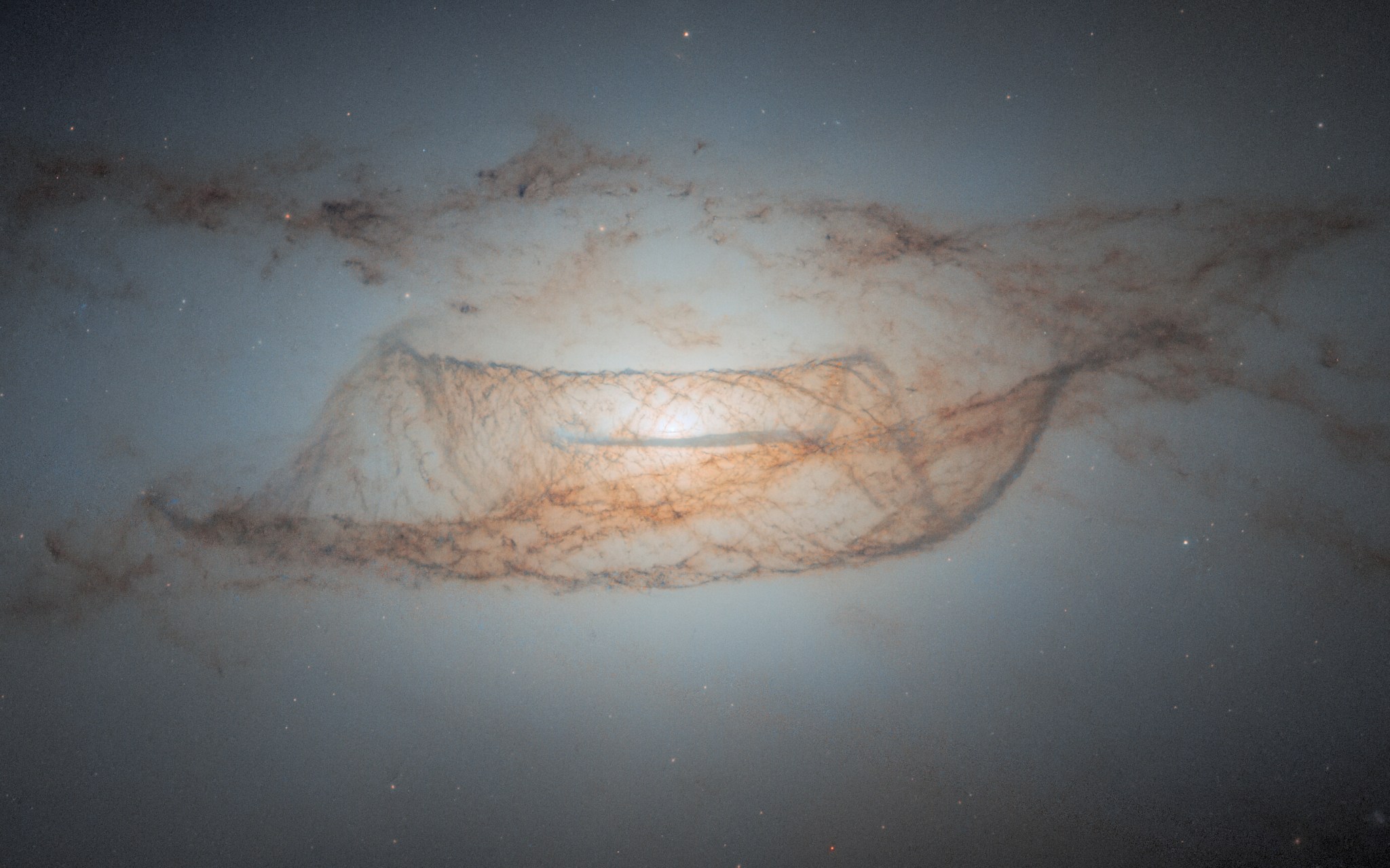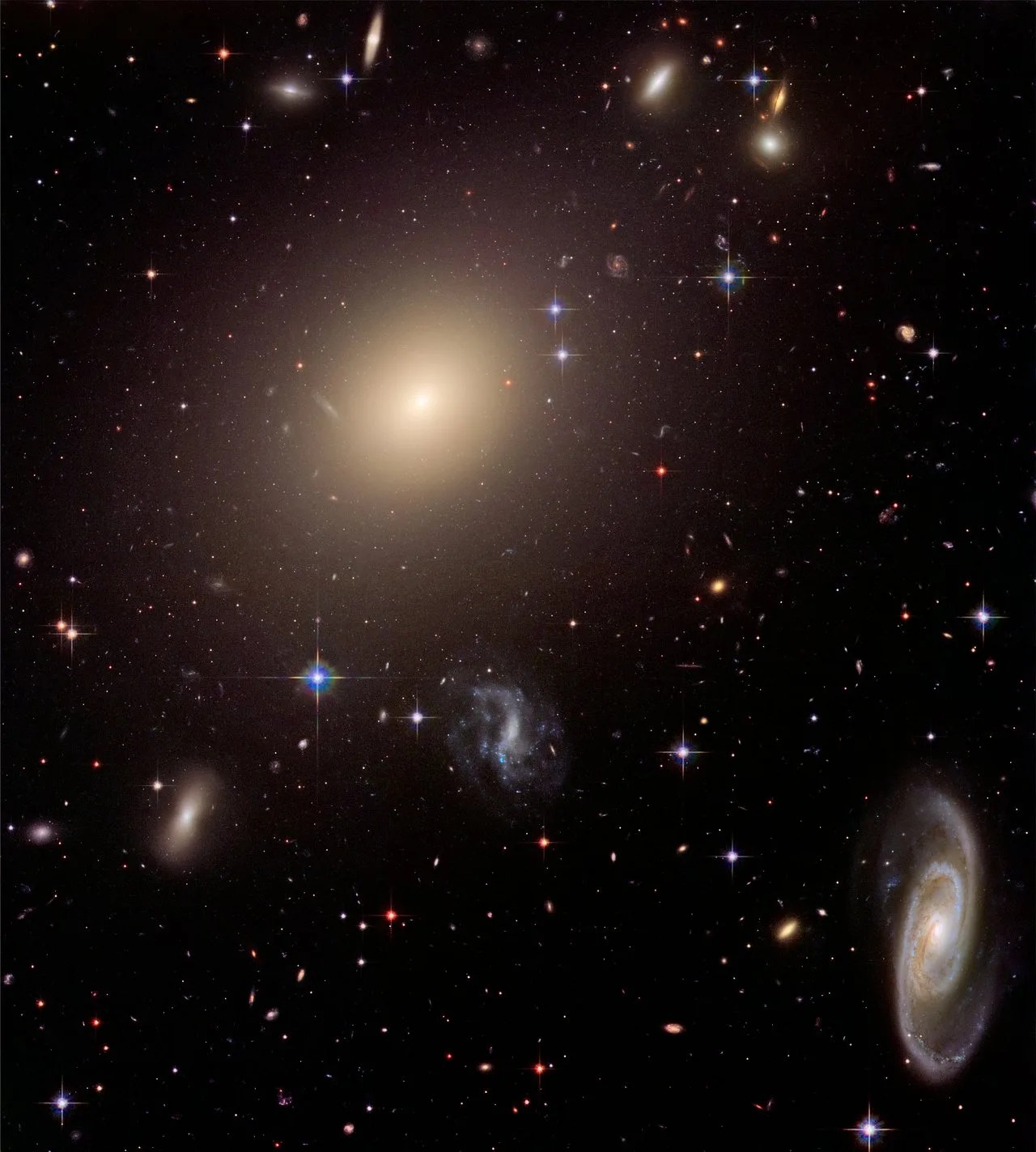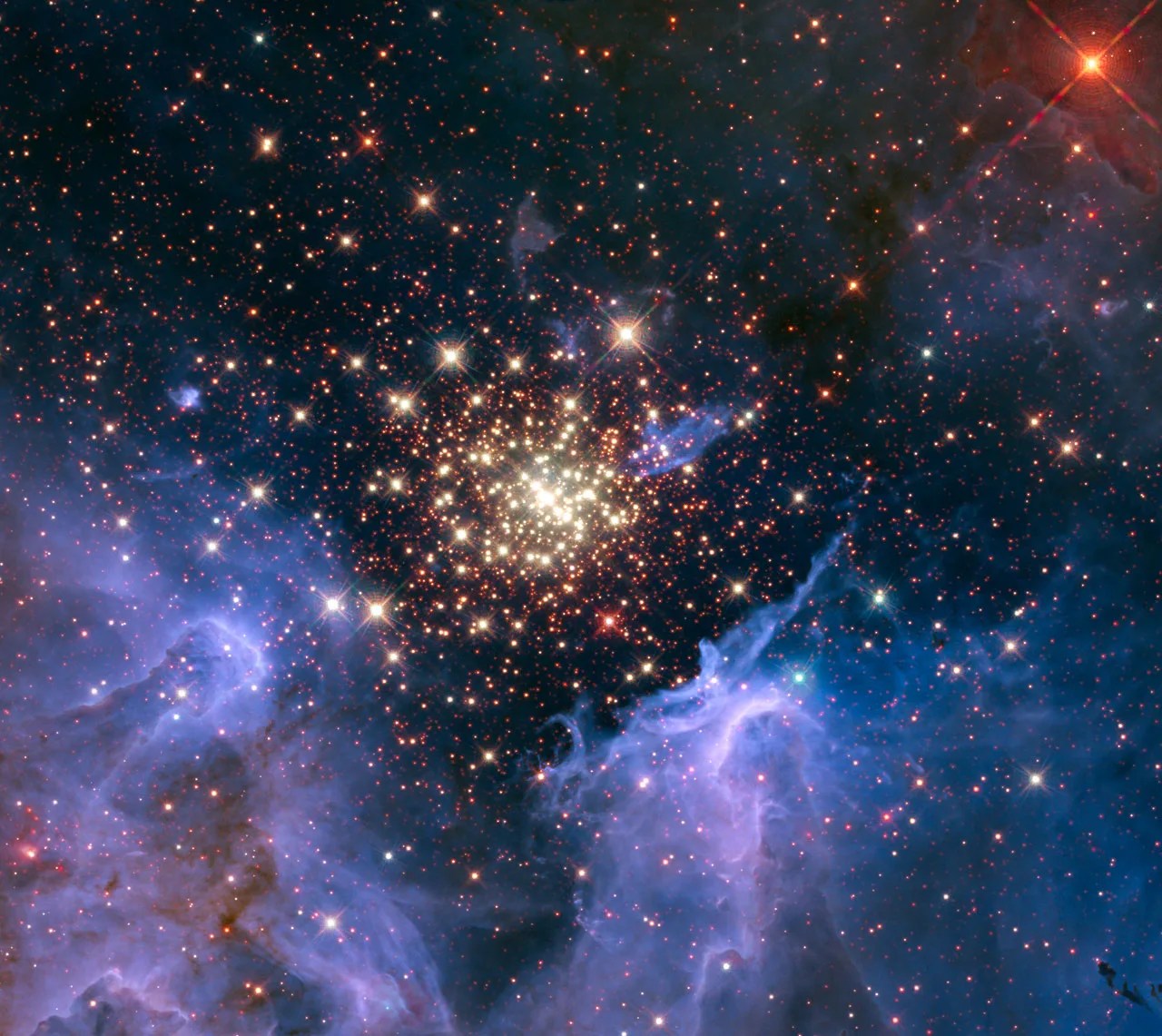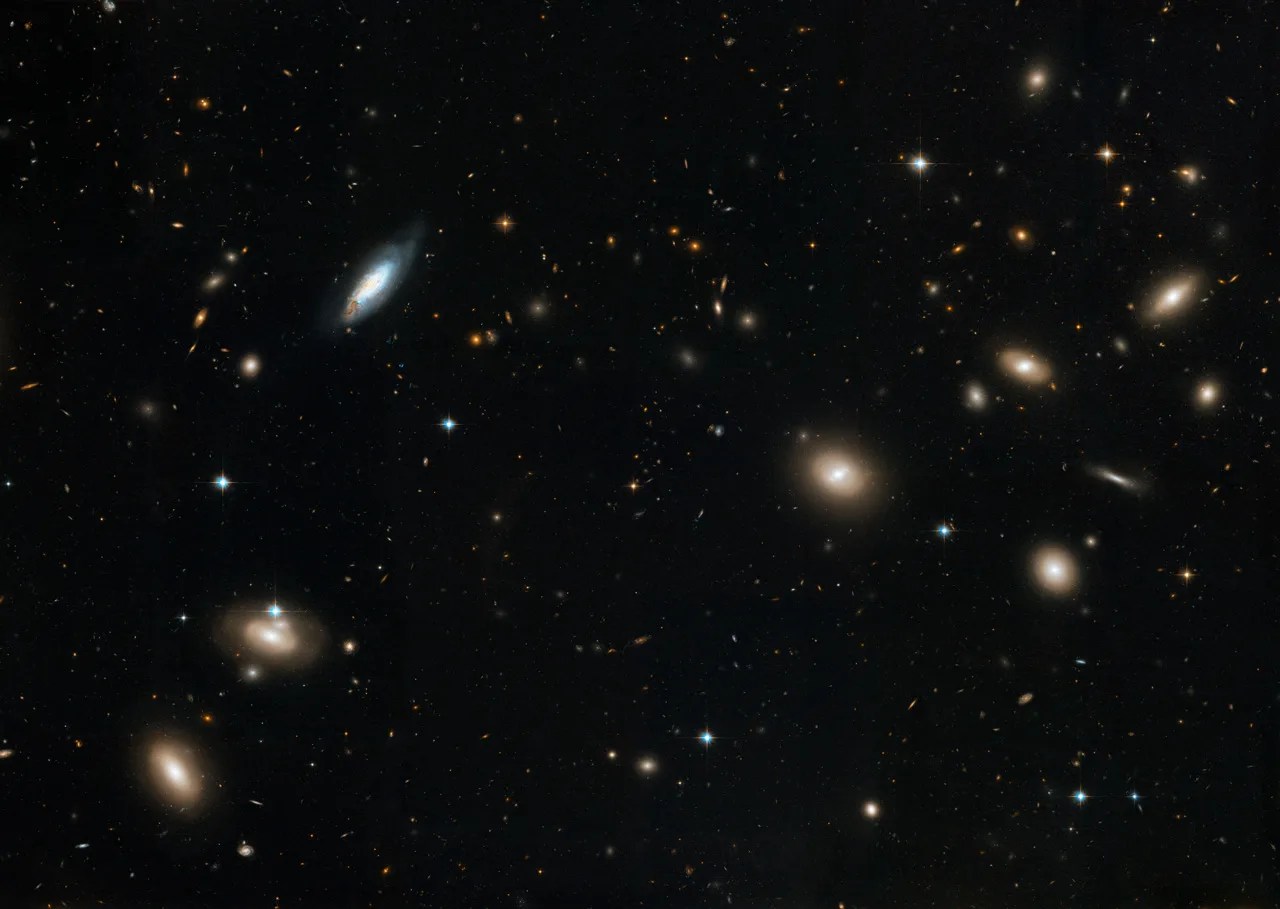Featured in this new image from the NASA/ESA Hubble Space Telescope is a nearly edge-on view of the lenticular galaxy NGC 4753. Lenticular galaxies have an elliptical shape and ill-defined spiral arms.
This image is the object's sharpest view to date, showcasing Hubble’s incredible resolving power and ability to reveal complex dust structures. NGC 4753 resides around 60 million light-years from Earth in the constellation Virgo and was first discovered by the astronomer William Herschel in 1784. It is a member of the NGC 4753 Group of galaxies within the Virgo II Cloud, which comprises roughly 100 galaxies and galaxy clusters.
This galaxy is likely the result of a galactic merger with a nearby dwarf galaxy roughly 1.3 billion years ago. NGC 4753’s distinct dust lanes around its nucleus probably accreted from this merger event.
Astronomers think that most of the mass in the galaxy lies in a slightly flattened, spherical halo of dark matter. Dark matter is called ‘dark’ because we cannot directly observe it, but astronomers think it comprises about 85% of all matter in the universe. Dark matter doesn’t appear to interact with the electromagnetic field, and therefore does not seem to emit, reflect, or refract light. We can only detect it by its gravitational influence on the matter we can see, called normal matter.
NGC 4753’s low-density environment and complex structure make it scientifically interesting to astronomers who can use the galaxy in models that test different theories of formation of lenticular galaxies. The galaxy has also hosted two known Type Ia supernovae. These types of supernovae are extremely important in the study of the expansion rate of the universe. Because they are the result of exploding white dwarfs which have companion stars, they always peak at the same brightness -- 5 billion times brighter than the Sun. Knowing the intrinsic brightness of these events and comparing that with their apparent brightness allows astronomers to use them to measure cosmic distances, which in turn help us determine how the universe has expanded over time.
Text Credit: European Space Agency (ESA)
Explore More
Media Contact:
Claire Andreoli
NASA's Goddard Space Flight Center, Greenbelt, MD
claire.andreoli@nasa.gov
































